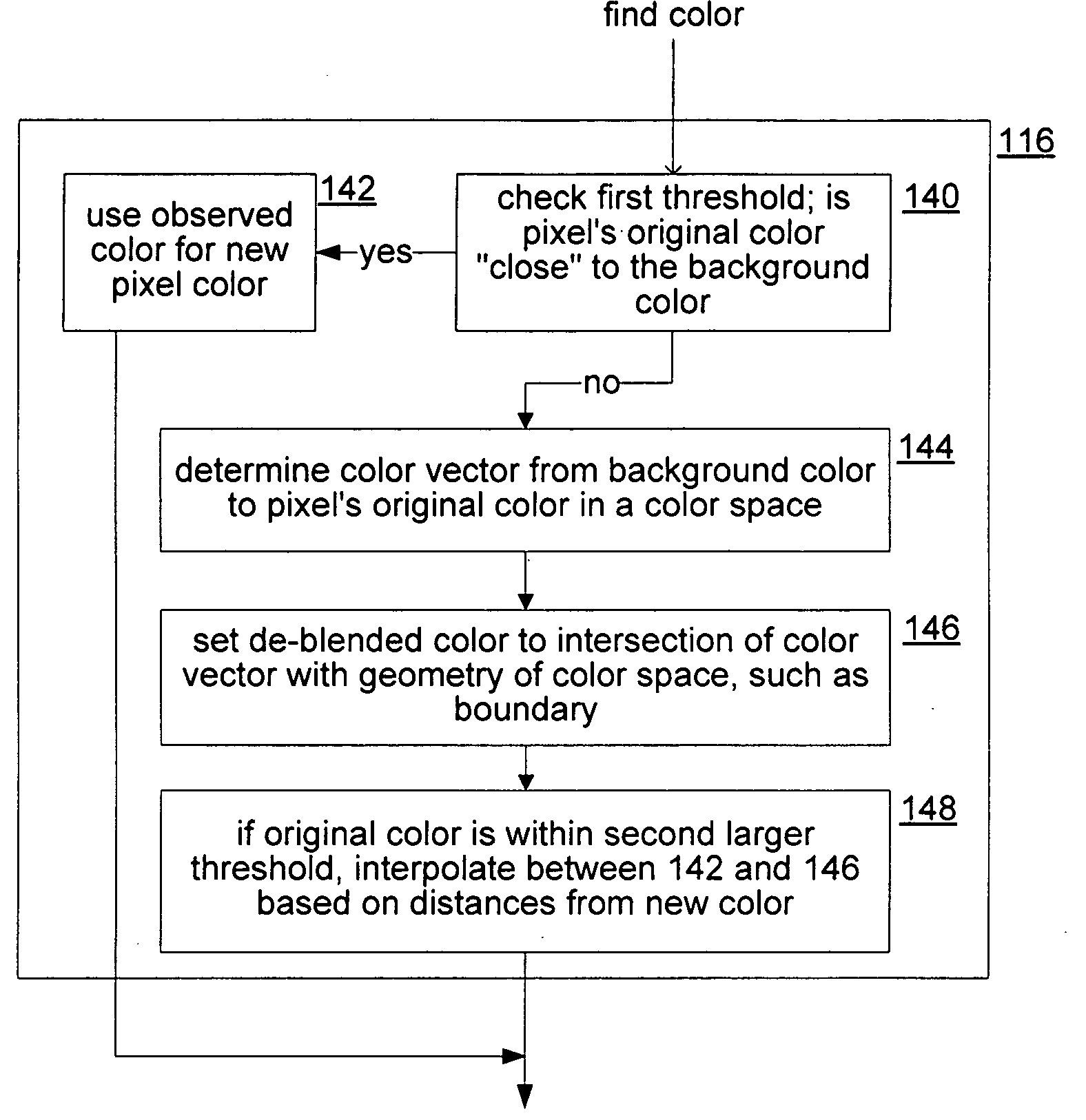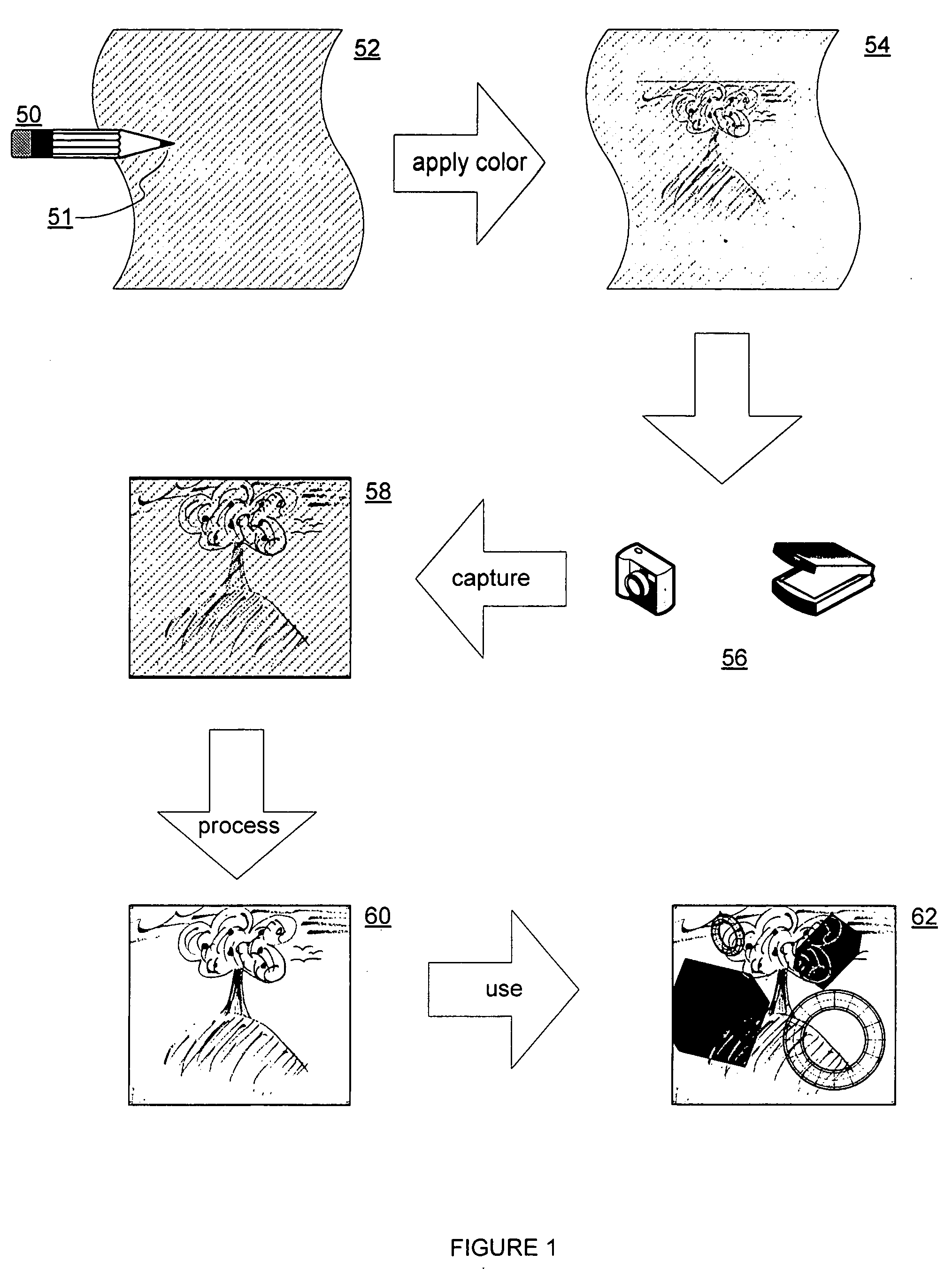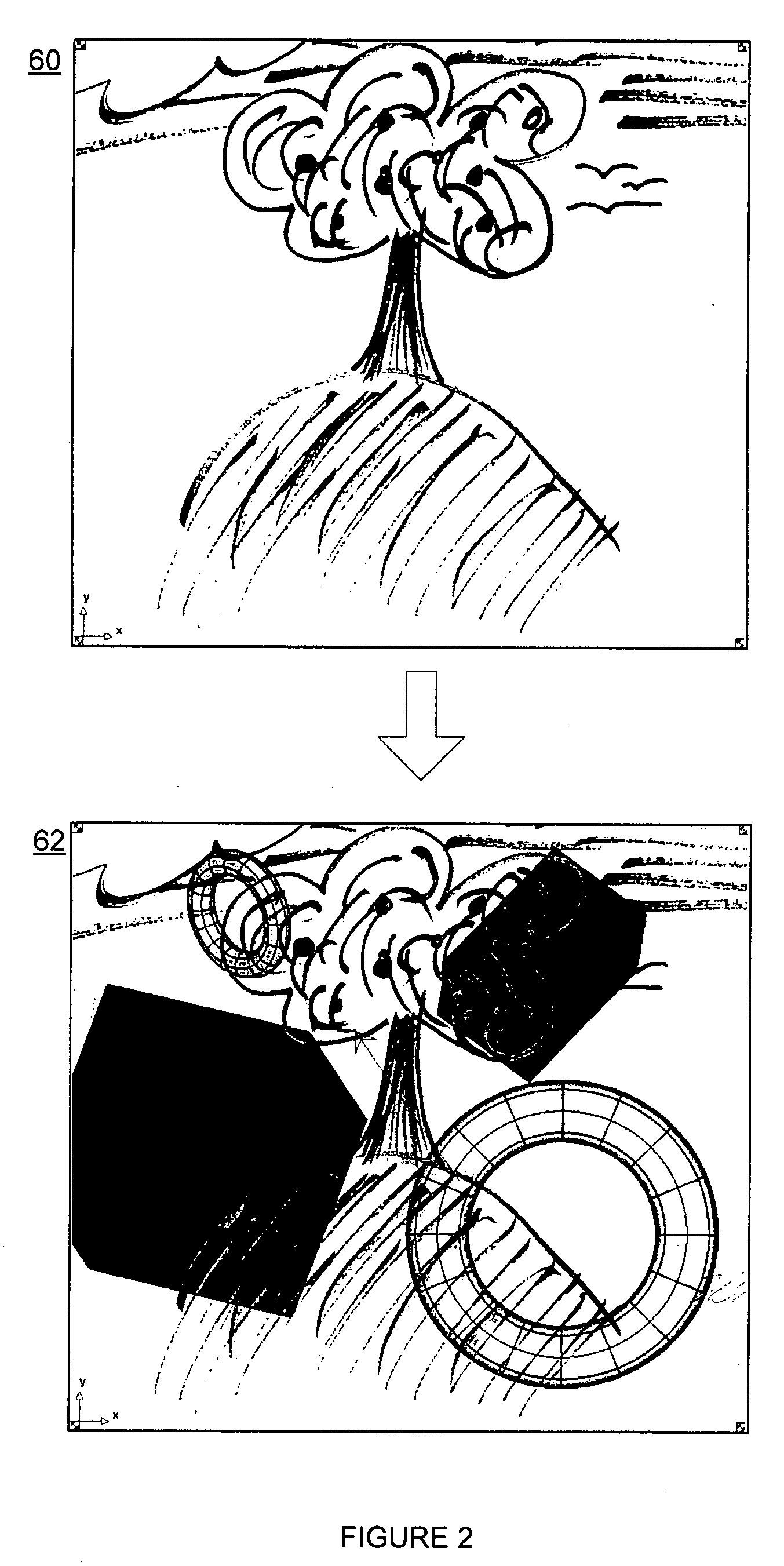Transparency and/or color processing
a transparency processing and color processing technology, applied in the field of image processing, can solve the problems of not allowing pixels to be partially transparent, visual artifacts are common, and transparency processing has not been able to preserve the hue and saturation of original image colors, so as to achieve the effect of automatically finding the transparency of the pixel
- Summary
- Abstract
- Description
- Claims
- Application Information
AI Technical Summary
Benefits of technology
Problems solved by technology
Method used
Image
Examples
Embodiment Construction
[0029] As discussed in the Background above, it has not previously been possible to automatically de-blend from an image a given color such as a paper color to produce a digital equivalent of an artist's figure of ink, pencil graphite, paint, etc. as though it had been applied to a transparent surface rather than to paper or some other physical medium. Artists have not been able to accurately, quickly, and easily use their physical subjects, drawings, paintings etc. in digital form with a reference or background color naturally de-blended therefrom.
[0030]FIG. 1 shows a process that is an example of a context in which techniques discussed below may be used. A person may start by using a pencil or other coloring tool(s) 50 to apply coloring substance(s) 51 to paper or some other physical medium or surface 52. The resulting physical drawing or subject 54 is captured by a capture device 56 such as a scanner or a CCD-based device, thus producing an original digital image 58 of the subje...
PUM
 Login to View More
Login to View More Abstract
Description
Claims
Application Information
 Login to View More
Login to View More - R&D
- Intellectual Property
- Life Sciences
- Materials
- Tech Scout
- Unparalleled Data Quality
- Higher Quality Content
- 60% Fewer Hallucinations
Browse by: Latest US Patents, China's latest patents, Technical Efficacy Thesaurus, Application Domain, Technology Topic, Popular Technical Reports.
© 2025 PatSnap. All rights reserved.Legal|Privacy policy|Modern Slavery Act Transparency Statement|Sitemap|About US| Contact US: help@patsnap.com



